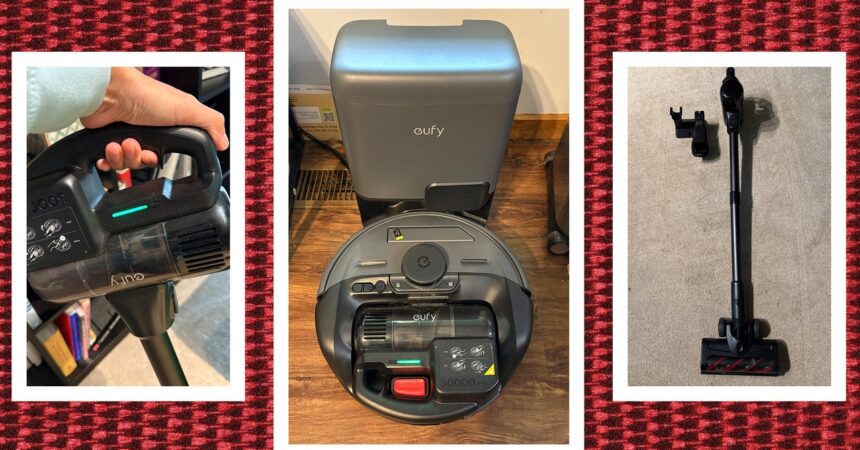I was thoroughly impressed by the Eufy E20. Robot vacuums have experienced little innovation in recent years, but this one stood out—an adorable device that serves three functions in one! Use it as a standard robot vacuum to map and clean your home. Once it’s finished, detach it from its dock and transform it into either a cordless stick vacuum or a handheld vacuum.
There’s a lot to admire about the Eufy E20. It boasts an impressively compact size, is affordably priced, and addresses several significant design issues. After using it for several weeks, I recognize its creativity while also conceding that it’s primarily intended for light cleaning. It doesn’t perform as efficiently as a dedicated heavy-duty robot vacuum or a Dyson stick vacuum, but that’s completely acceptable.
Compact Excellence
Photograph: Adrienne So
The first aspect that strikes you is how the E20 diverges from typical home docking stations with its compact size. Measuring just 14 inches tall, 17 inches long, and 15 inches wide, it’s barely larger than the robot vacuum itself. The base functions as a self-emptying dustbin, eschewing the bulky design found in advanced models that contain both clean and dirty water tanks. Setting it up was a breeze—unboxing, installation, and activation were all straightforward.
The vacuum connects effortlessly to the Eufy Clean app (available on iOS and Android). To begin using the robot vacuum, pair it with the app and initiate a mapping run throughout your home. It utilizes a laser navigation system, so you won’t have to worry about AI-enabled cameras moving about and taking unauthorized photos or storing data elsewhere.
Screenshots courtesy of Adrienne So
However, the laser navigation system doesn’t quite match the precision of other systems I’ve tried, such as those utilizing camera technology or simultaneous localization and mapping. While it adeptly avoided obstacles and mapped my spaces fairly accurately, when I directed it to clean a single room at a time, the E20 occasionally left a slight trail of debris along the room’s edges. It also took multiple attempts for the vacuum to recognize the no-go zone I had set up.










